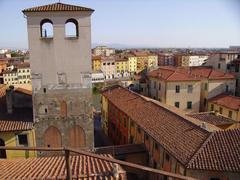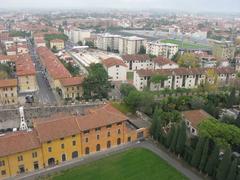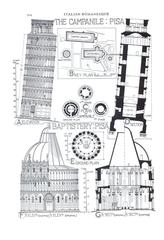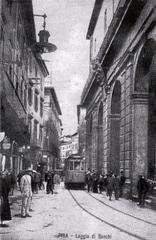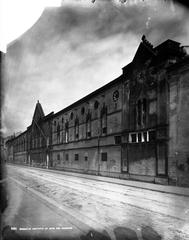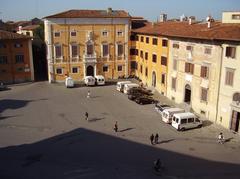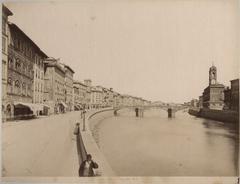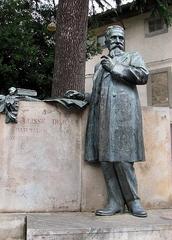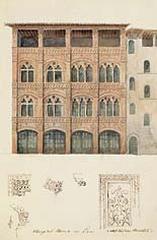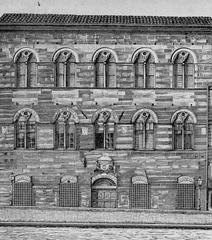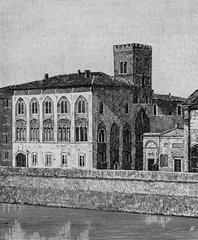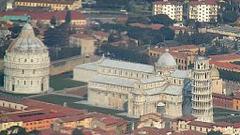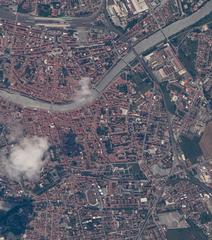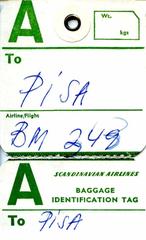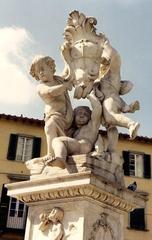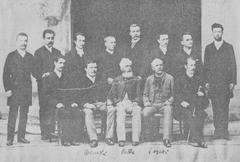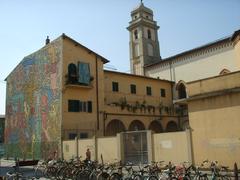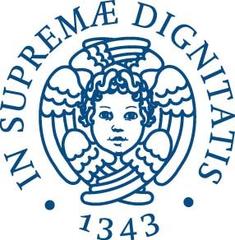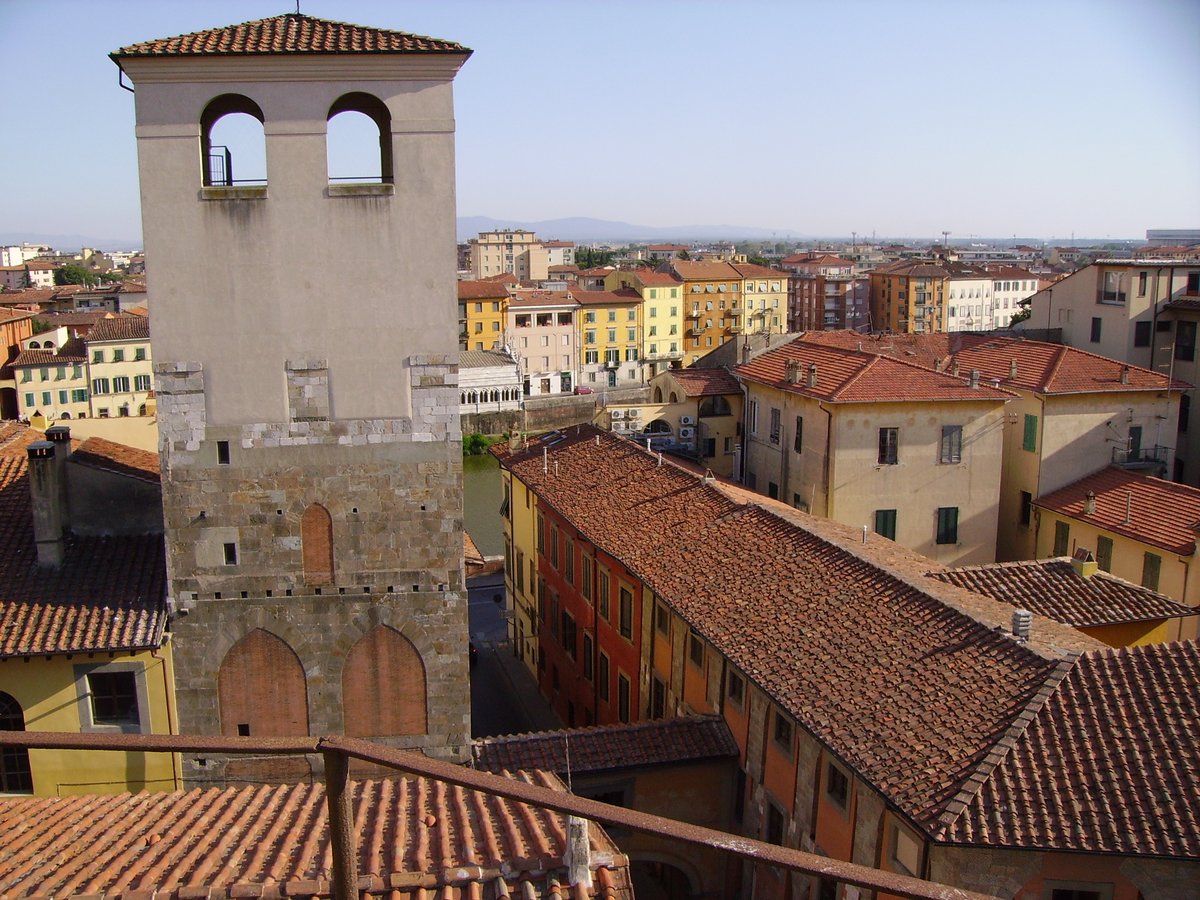
Palazzo delle Vedove: Visiting Hours, Tickets, and Guide to Pisa’s Historic Medici Landmark
Date: 15/06/2025
Introduction
Located in the heart of Pisa, Italy, the Palazzo delle Vedove—known as the “Palace of the Widows”—is a remarkable testament to the city’s medieval and Renaissance heritage. Originally a noble residence dating back to the 12th–14th centuries, it later became a sanctuary for the widows of the influential Medici family. This transformation reflects the Medici’s profound impact on Pisa’s architectural evolution and social fabric, illustrating the interplay between dynastic power, gender roles, and urban planning (Pisa Tour; Pisa Travel; Pisa Online).
Though its interior is generally closed due to current administrative use, the Palazzo delle Vedove’s exterior and gardens are accessible to visitors. Its distinctive architectural features, strategic central location, and Medici legacy make it an essential stop for those seeking to understand Pisa’s aristocratic and urban history. This guide provides detailed insights on the palace’s history, architecture, visiting information, travel tips, and nearby attractions.
Contents
- Historical Overview
- Architectural Evolution and Features
- Medici Connections and Social Significance
- Visiting Information: Hours, Tickets, and Accessibility
- Practical Tips and Nearby Attractions
- Frequently Asked Questions (FAQ)
- References
Historical Overview
The Palazzo delle Vedove originated as the domus of the Bocci family, a prominent Pisan lineage. Built between the 12th and 14th centuries, its foundations reflect Pisa’s medieval prosperity as a maritime republic. The palace’s subsequent transformation in the 16th century under the Medici was pivotal: following Pisa’s subjugation by Florence, the Medici sought to consolidate influence by acquiring and adapting noble properties (Wikipedia; Pisa Travel).
The Medici repurposed the palace as a residence for their widowed women. This practical yet symbolic function provided security, status, and privacy for Medici widows, while also cementing Medici authority through visible patronage and urban intervention. The palace’s name, “Palazzo delle Vedove,” directly references this unique social role (Pisa Tour).
Architectural Evolution and Features
Medieval Foundations
The palace’s medieval core is evident in its robust brickwork, arched windows, and defensive layout typical of urban residences of that era. On via Trento, you can see remnants of the original masonry and a rare marble quadrifora (four-light mullioned window), partially altered during later renovations (Pisa Online).
Renaissance Transformations
The 16th-century Medici renovations introduced Renaissance aesthetics and engineering. The façade on via Santa Maria features six bays, with closed porticoes and prominent load-bearing arches, blending medieval solidity with Renaissance refinement. The Medici also added larger rectangular windows to improve light and comfort, and reinforced structural elements for durability (Evendo).
Unique Covered Passages
A signature feature is the system of elevated, covered corridors connecting the palace to the Torre De Cantone and the Church of San Nicola. These passages enabled Medici widows to attend religious services discreetly, reflecting both social norms and innovative urban design for privacy and security (Pisa Travel; Pisa Tour).
Materials and Decorative Elements
The palace combines local Pisan brick with stone framing, especially in window surrounds and cornices. The marble quadrifora window is a particular highlight, symbolizing both the wealth of its original owners and the artistic ambitions of the Medici era (Wikipedia).
Medici Connections and Social Significance
The Palazzo delle Vedove’s most notable historical function was as a Medici widow residence. This arrangement offered noblewomen protection and status, while reinforcing the patriarchal structure of Medici society. The palace’s urban integration—with covered passages linking it to key religious and political sites—demonstrates how architecture was used to maintain both familial bonds and social control.
Beyond its dynastic role, the palace exemplifies how elite families shaped Pisa’s cityscape, embedding their residences within networks of churches, gardens, and administrative centers. The Medici’s investment in the palace was part of a broader effort to transform Pisa from an independent republic into a Renaissance city aligned with Florentine interests (Pisa Tour).
Visiting Information: Hours, Tickets, and Accessibility
Visiting Hours
- Exterior and Gardens: Open to the public daily during daylight hours.
- Interior Access: Generally restricted due to use by the University of Pisa. Occasional special events or guided tours may allow interior access—check local tourism resources for updates.
Tickets
- Exterior Viewing: Free; no ticket required.
- Special Events: Any ticketing for special exhibitions or tours is announced on official Pisa tourism websites.
Accessibility
- Getting There: Central location, easily reachable on foot from major sites like the Leaning Tower and Piazza dei Cavalieri. Public transport and nearby parking are available, though limited.
- Mobility: The surrounding area is pedestrian-friendly, but the gardens have uneven surfaces. The covered passages and interior are not accessible.
Practical Tips and Nearby Attractions
Photography
- Best angles are from via Santa Maria and via Trento, with the marble quadrifora and covered passages as focal points. Early morning or late afternoon light brings out the façade’s textures.
Nearby Attractions
- Leaning Tower of Pisa: Iconic landmark within walking distance.
- Piazza dei Miracoli: Includes the cathedral, baptistery, and cemetery.
- Church of San Nicola: Directly connected via the palace’s covered passages.
- Piazza dei Cavalieri: Renaissance square with further Medici palaces and the University of Pisa.
- Orto Botanico di Pisa: Europe’s oldest university botanical garden.
Travel Tips
- Comfortable shoes are recommended for cobbled streets.
- Combine a visit to Palazzo delle Vedove with a walking tour of Pisa’s historic palaces for expert insights (GPSmyCity).
- Use local tourism offices or travel apps like Audiala for up-to-date visitor information.
Frequently Asked Questions (FAQ)
Can I visit the interior of the Palazzo delle Vedove?
The interior is generally not open to the public due to administrative use. Occasionally, special tours or events may provide access.
Are guided tours available?
While there are no regular tours inside the palace, many Pisa walking tours include the exterior and discuss its history and architecture.
Is the site accessible for people with disabilities?
The immediate area is accessible, but interior and passageway access is not available.
Is there an entrance fee?
No fee is required to view the exterior or gardens.
What are the best times to visit?
Early morning or late afternoon for optimal lighting and fewer crowds.
References
Conclusion
The Palazzo delle Vedove stands as a testament to Pisa’s architectural evolution and the enduring influence of the Medici dynasty. Its unique combination of medieval foundations, Renaissance innovations, and social significance make it a rewarding destination for history, architecture, and culture enthusiasts. While its interior remains largely closed, the palace’s exterior, gardens, and context within Pisa’s historic center offer a rich experience.
Plan your visit with current information and consider joining a local walking tour to enhance your understanding of this important site. For further guidance, download the Audiala app for personalized travel tips and up-to-date details on Pisa’s historical treasures.
